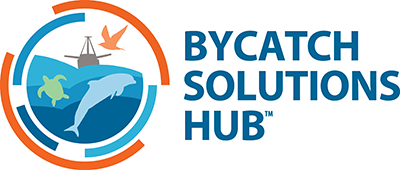Funding Opportunities
Support Bycatch Mitigation
Funding Opportunities matches bycatch solutions projects in need of developmental support with interested seafood industry partners.
Below are posted projects in need of funding. If interested in any of the featured projects, click “I’m Interested!” to get in touch with the Bycatch Solutions Hub Manager and learn more about the project or see the project workplan.
*Projects may include a service and hosting fee by SFP for associated work to be paid for by funding organization.
Contact us for more information on how to create a project to post on the Bycatch Solutions Hub.
Project Request Form
We are seeking detailed proposals from fisheries organizations associations, seafood suppliers, and NGOs that work directly with fishers to decrease fishery impacts on endangered, threatened, and protected taxa within their fishery.
Description
Research suggests that over 300,000 whales and dolphins die annually due to entanglement in fishing gear, with additional unknown numbers also entangled in marine debris. This can have devastating, long-term conservation impacts on those populations that are already threatened, in some cases critically. In response to these growing concerns, the International Whaling Commission (IWC) launched a Global Whale Entanglement Response Network (GWERN) in 2011. The immediate aim of the program was to build safe and effective entanglement response capability around the world. The long-term goal is to prevent entanglements incidence globally.
The program is a partnership with the Center for Coastal Studies (CCS) in Provincetown, Massachusetts, US considered one of the global leaders in entanglement response. It is led by Technical Advisors who work for both CCS and the IWC, supported by an Expert Panel drawn from countries with long-standing and well-tested approaches to entanglement response.
With assistance from this global expert group, a Best Practice Guidelines and a two-day entanglement response training package has been development and is in need of further support. The training workshop includes classroom study, with information on data collection, relevant regulations, and regional cetacean identification, followed by on the water, hands-on disentanglement exercises. Since 2012, these training workshops have been delivered across five continents, reaching over 1,700 participants from more than 43 countries.
Funding to support this program includes equipment costs for disentanglement kits and trainer sponsorship consisting of flights, subsistence and a $205/day trainer fee. Additionally, a smaller funding package to support disengagement kit supplies alone is available.
Beneficiary: International Whaling Commission in partnership with Center for Coastal Studies
- Funding to support equipment costs for disentanglement kits and trainer sponsorship $18,944 USD
Description
Chilean purse-seine fisheries are comprised of around 500 “artisanal” vessels (<18m in length). Historically, high bycatch rates of Pink-footed shearwater were observed in the area (>1,500), an Endangered in Chile. A modified version of the purse seine (MPS) has been developed through a collaboration between the fishing industry, BirdLife, and net makers, and has shown significant reduction of Pink-footed shearwater and Black-browed albatross bycatch.
In the MPS, sections of the net with high seabird entanglement rates need to be modified. This includes a novel buoy mounting method, adjusting the mesh size, and removing excessive netting material. Following these modifications, trials not only showed a 98% reduction in diving seabird bycatch but had no impact on target fish catch and even helped saving costs in net materials. This innovation was recognized as one of the best environmental initiatives in Latin America in 2017 (Premios Latinoamérica Verde).
This project will benefit artisanal fishermen that sell to Blumar Seafood in central Chile. Out of the total 25 purse-seiners managed by Blumar Seafood, 5 vessels have already gone through gear modification thanks to a project lead by BirdLife International and supported by the National Fish and Wildlife Foundation (NFWF). This project will upgrade 5 additional purse-seiners targeting sardine and anchovy to continue efforts toward a total transformation of the artisanal fleet in south-central Chile with Modified Purse Seines (MPS).
In addition to the development of the MPS, this funding will support training workshops for captain and crew members, to provide expertise on the structural modification of the fishing gear and on the minimum standards and maintenance of modifications to secure best bycatch mitigation practices in this fishery.
This project also includes a committed matching contribution of $95,563 USD combined from Birdlife International and Blumar Seafood.
Contact the Bycatch Hub Manager for more specifics on the project workplan and a line-item budget.
Beneficiary: Birdlife International
- 5 Modified Purse Seines - Funded $69,579 USD
- 5 Modified Purse Seines - Funded $30,000 USD
